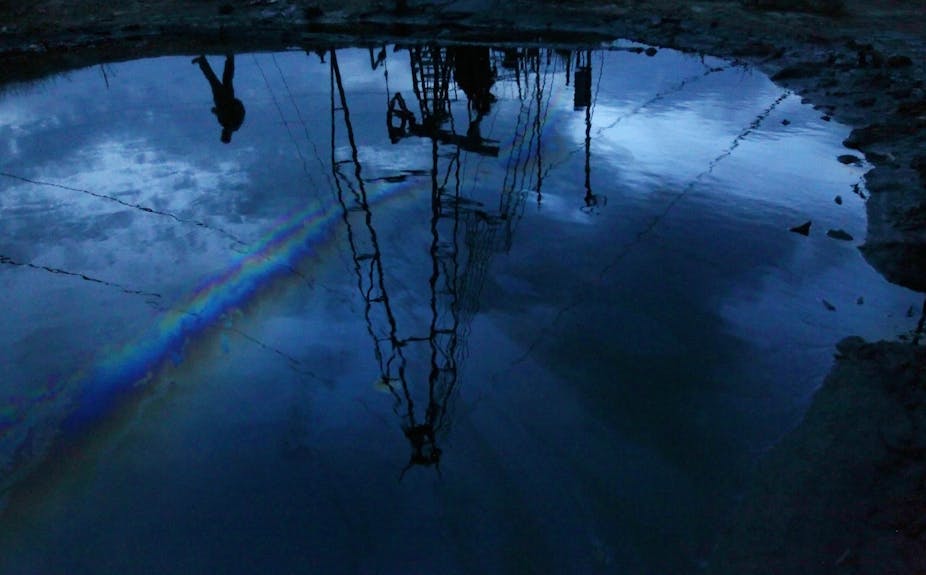If Australia wants to avoid the “resources curse” it needs to proactively strengthen its institutions. Left unchecked, our increased reliance on the resource sector to drive the economy could lead to a reduction in the quality of our domestic institutions and in the country’s long-term growth prospects.
This is the message for Australia from a recent World Bank discussion paper which empirically examined the existence of the “resources curse”.
In the paper, economists Donato de Rosa and Mariana Lootty attempted to determine whether being rich in resources had a negative impact on the quality of that country’s public institutions.
This is an area of economics fraught with difficulties: how should we measure the quality of institutions or the degree of competition in local markets? Moreover, the relationship between institution quality and availability of resources is likely to be complex and to evolve over time.
It is easy for Australian governments and industry to dismiss the idea of a resources curse. The sector has played a vital role in much of Australian’s prosperity for the past 20 years.
Our civil society and institutions appear well placed to manage the implications of resource dependence. We have a free press, a competent and independent judicial system, and a myriad of checks and balances.
Unfortunately, it remains plausible for our resource dependence to influence institutional development, resulting in a resources curse.
Australian public debate has already ignited over the perceived influence mining companies appear to be trying to exert over the media and the government. We just have to look at the concerns raised over the control of Fairfax by mining magnate Gina Rinehart and the mining companies’ 2011 public campaign against the mining tax.
Economics Nobel Prize winner George J. Stigler and Mancur Olson both developed theories explaining how business interests might influence public policy.
In the context of a resource-rich country like Australia, Stigler’s theory, based on the collective action theory developed by Olson, is consistent with the notion that resource exporters’ increased profits could allow them to outbid other constituencies to influence the making of laws and regulations on their favour.
If this happens, lower quality institutions could lead to lower returns from entrepreneurship, fewer incentives to invest in non-resource sectors, less innovation and competition dampening.
By the end of the mining boom, the country could experience lower economic growth rates than if it did not experience a resource boom.
It is important to note that this mechanism differs from “Dutch disease”.
With Dutch disease, the quality of institutions is taken as remaining unaffected, but there is a reduction in productivity associated with the shift of production factors away from non-resource sectors.
In their discussion paper, World Bank economists de Rosa and Lootty looked at 212 countries and territories from 1996 to 2010, measuring resource dependence against institutional quality and intensity of competition.
To do this, they quantified resource dependence as measured by the share of mineral fuels in total exports against institutional indicators taken from World Bank’s Worldwide Governance Indicators (WGI) and intensity of competition (from the World Economic Forum survey).
The pair used econometric techniques that controlled for several other factors that may influence the quality of institutions. The authors found that the only significant WGI indicator was government effectiveness.
They concluded that a 10% increase in the average worldwide share of fuel exports in total exports results in a 1.3% decrease in government effectiveness in the short run, and a 2% decline long-term.
Intensity of competition was also significant, with a 10% increase in the share of fuel exports in total exports associated with a short-term decrease of 6.9% in the competition indicator and 9.3% long-term.
There were two lessons from this study. First, on average, an increase in the economic significance of resources adversely impacts the quality of institutions. Second, this impact increases over time, suggesting that even initially high quality institutions can deteriorate.
To their credit, the authors recognised that country specific analysis is required to develop a more subtle understanding of the impact of resources on the quality of institutions. For example, although Donato and Lootty did not provide elasticities for Australia, the significant increase in the share of fuel exports in total exports in Australia has been accompanied by an improvement in the WGI governance indicator, which works in the opposite direction of their predictions.
Nevertheless, the challenge for Australians is to recognise the possible link and to ensure that our institutions are sufficiently robust to allow us to continue to beat the resources curse.

